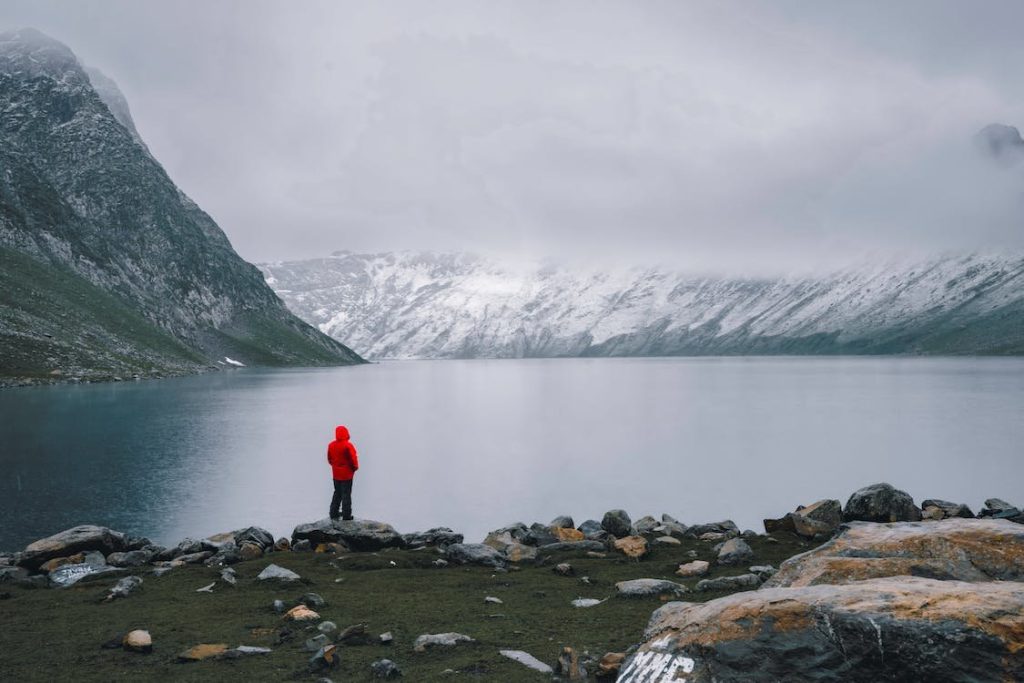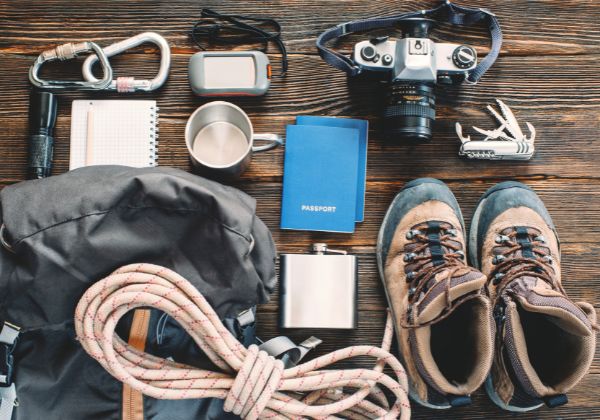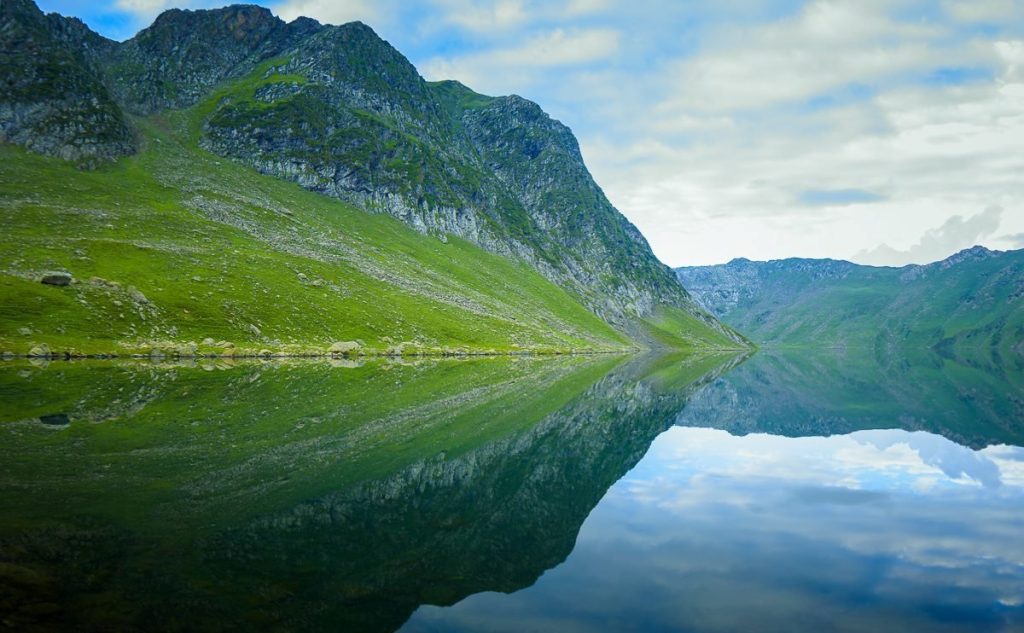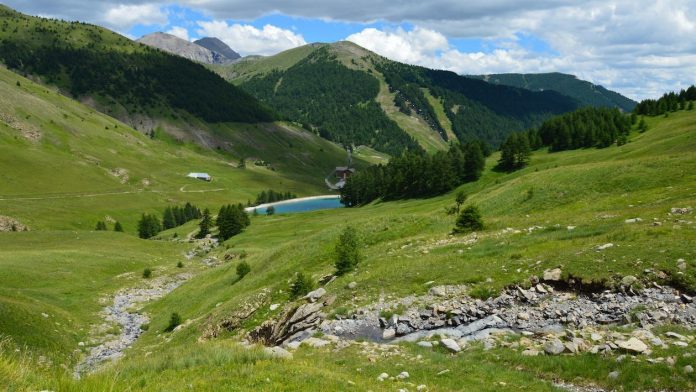Tarsar Marsar Trek – Introduction
The highlight of the Tarsar Marsar Trek is the opportunity to see three of the most beautiful alpine lakes: Tarsar, Marsar, and Sundarsar. This fantastic hike will captivate your senses as it takes you through lush-green meadows, dense fir forests, and sparkling streams. If your body is unprepared, the end of your trip may feel dismal. We shall discuss the essential fitness criteria throughout this blog.
Understanding the Tarsar Marsar Trek
Tarsar Marsar Trek Trail difficulty and duration
Trekkers on this trek are expected to be in top mental and physical shape and to have done similar hikes before. Hikers should be able to keep up a steady pace for 4 to 8 hours at a stretch without getting tired. Even if the terrain is more complicated, like if it is higher or has more rocks, the paths are probably in good shape. The average time spent hiking daily could be six to eight hours. From Aru to Marsar Lake, the altitude gain is 5,245 ft (1,598 m) in 24 km of trekking.

Altitude and weather conditions of Tarsar Marsar Lake
The best time to trek the Tarsar Marsar Lakes Trek is between July and October. Kashmir only gets a limited amount of rain, making it a great place to see the green lakes and fields from July to October. This is a moderate trek and a delight for trekkers from mid-June through September. The pure beauty of the valley is enhanced by the fact that there is still some snow on the ground in June! The average daily temperature is between 13 and 18 degrees, and the average nighttime temperature is between 1 and 3 degrees. This area gets a lot of snow in the winter, so it’s too cold to trek because the passes, trails, and fields are all covered in snow.
Preparing for the Tarsar Marsar trek and how to set goals
To effectively set fitness goals for your trek, you need more than just a general concept of what you want to accomplish. It would be best if you narrowed down your focus. It might be helpful to think about the “who, what, when, where, why, and how” while establishing your goals. Aim to clearly articulate what you aim to achieve and why you want to make your objective a reality. It also gives your training a focus, which makes it simpler to strive toward the goal you have set for yourself.
Exercise Regimen for Tarsar marsar trek
Ankle sprains and ankle rolls are two of the most prevalent hiking ailments. Start with simple exercises to warm up your muscles and increase your heart rate if you’re out of shape or inactive. This will increase your heart rate and make your muscles ready to work.
Consult your physician before undertaking any exercise regimen. Also, take help of experts if you are doing this for the first time.

Run or walk through sand – It strengthens the calf muscles that help keep your knees and ankles in good condition.
Increase your range of motion – Invest in a resistance band to build your muscles through their range of motion. Standing on a tennis ball or balancing disc is an excellent way to train the tiny stabilizer muscles around the ankle and knee. This is another fantastic benefit of doing this exercise.
Crunches – Building up the strength in your core will assist you in maintaining your balance on surfaces that are not level.
Squats and lunges – To build up your core strength, keep your back in a neutral position when you perform the squats and lunges.
Push-ups – On longer treks where you need to carry a bigger pack, having upper body strength (particularly in your back) will serve you well and greatly benefit you.
Cardio – Acquiring something is simply strolling along a path. You must ensure you’re getting your heart rate up. Your lung capacity will increase.
Step-ups – For this, you will need your backpack. It would be best if you aimed to have your bag weigh the same amount as it will when you return from your trip with it. This exercise should be performed thrice weekly until you can complete 700 steps in less than half an hour to prepare for a long, multi-day walk.
Sports and other methods – If you hate running or going to the gym, you can also train yourself through sports, swimming, cycling, climbing stairs and whichever method can help increase your stamina and fitness. Try to be regular and be physically active at least 5-6 times a week.
Additional Tips for Fitness and Safety
Warming up and cooling down exercises
A helpful piece of advice is to start your warm-up by working on your upper body and then work your way gradually downwards, finishing with your feet. So, here is one more thing we want you to practice – stretching your body on a daily basis. There is no need to go for specific yoga asanas or stretching exercises. Instead, just make sure that you stretch your body as you go about your normal routine. For instance, if you are working, just stretch your neck, arms, and legs every couple hours. Even when you are working out, break into a stretch to relax your body. This way, your body will get used to relaxing upon being stretched gently. This would go a long way when you want to stretch and relax on the trek.

Proper gear and equipment
When it comes to Trekking gear like Sleeping bags, Utensils, and Ropes will all be provided by TrekNomads. To make the trek more comfortable, it would be best if you bring the following optional gear –
- UV protection sunglasses (because snow blindness is a thing) – Category 3 Polarized Sunglasses
- Head Torch
- Daypack (25-30 Liters)
- Rucksack (50-60 Liters)
- Medicine Kit – essential medicines; please consult your physician for all required medicines.
- Body Warmers
- Hot water bag
- Thermos flask – 1 liter
- Trail munchies
- Ziplock or poly bags to compartmentalize wet, dry, and dirty stuff
- Trek Poles

Managing altitude sickness symptoms
- If you think you may be experiencing acute mountain sickness (AMS), stop what you’re doing and rest where you are.
- Make sure you’re getting enough water. Try drinking at least 4 litres during the trek.
- Let your trek leader know how you are feeling, even if your symptoms are not severe; there is a possibility that you may not be able to make sound decisions.
- Once you fully recover, you can continue moving up, but you should be careful. It would help if you waited until all your symptoms had subsided before attempting to climb.
- After two to three days, your body should have adjusted to the higher altitude, and you should no longer be experiencing any symptoms. If your symptoms do not improve or if they get worse, you should see a doctor.
- Avoid alcohol, Cigarettes or any form of tobacco
- Eat light meals – avoid meat, fried food or foods that can upset your stomach
- If you feel uneasy, take an anti-nausea medication
- if you have a headache, take prescription meds
First aid and emergency procedures
Trekking can be more dangerous when the surface is rocky or steep because it is easier to slip and fall. This is especially true in areas with a lot of hills or mountains. Changes in temperature and the surroundings around a person can cause sudden changes or illnesses in the body. Some of these are stomach pain or problems with digestion, the flu, fever, headaches, or other physical problems or illnesses. If something terrible happens, you must ensure you always have certain necessary first-aid supplies with you. Here are some essential things that should be in the kit:
- Please consult your doctor before taking any medications
- Bandages, Pain killer sprays, and Betadine solution.
- Hot water bag
- Altitude Medications
- Antiseptic cream
The trek leader will have a Basic First Aid box in case of an emergency, but we recommend that you only pack what you need in a first aid box.

Tarsar marsar trek- Conclusion
Your trek will go more smoothly if you are in better shape before you start. After spending so much time and energy (and likely money) getting to your trekking location, it only makes sense to make the most of it by being in peak physical condition and carrying all the necessary gear. You’ll get so much more out of your trekking experience if you follow the recommendations above, and it could help you have the trip of a lifetime.
Tarsar marsar trek – FAQs
I am obese, will I be able to complete the trek successfully?
Being obese should not stop you from doing the Tarsar Marsar trek. However, you will have to work on your stamina and fitness for 5 to 6 months before the trek. If you are overweight, losing a few kilos can go a long way to both your enjoyment and success on the trail. Still, we suggest you take advice from your physician before you register with us on the Tarsar Marsar trek.
I am diabetic and I do not know if I am fit to do the trek. Will I be able to complete the trek successfully?
Just because you have diabetes does not mean that you can’t go trekking. Try changing your diet a little bit and practice adjusting your insulin administration starting a few days before coming on the trek. Of course, before doing that, contact your physician.
I am a marathon runner, how should I train for this trek?
Marathon runners don’t need separate training as such when it comes to trekking. Although, we do suggest indulging in exercises such as staircase cardio, elliptical workouts, and training on inclined treadmill. These exercises will give you practice to trek hassle-free on tough terrains and areas that have a high inclination.
I go to the gym regularly, how should I train separately for this trek?
Training for trekking in the gym can be a convenient, effective and efficient way of training to help you get fit and strong for the trail. You can focus on Bodyweight exercises, Barbell exercises, Dumbbell exercises , Gym machine exercises, TRX exercises, Upper body exercises, Gym cardio exercises and Core exercises to train for this trek.
I have an old injury, can I do the trek?
When it comes to injury, it is important to know the type and seriousness of your injury. Consult your physician to know if you can register with us on the Tarsar Marsar trek.
How do I know if I am getting Altitude Sickness?
The symptoms of Altitude sickness are –
- headache.
- feeling and being sick.
- dizziness.
- tiredness.
- loss of appetite.
- shortness of breath.
Who accompanies us during the Tarsar marsar trek?
You will be accompanied by 1 Mountaineering qualified & professional trek Leader, Local Guide (Number of guides depending on the group size), 1 High Altitude chef & support staff and porters for carrying common equipment (like rations/tents/utensils/groceries).
Read more:
Tarsar Marsar trek difficulty level
Best time for Tarsar Marsar trek
